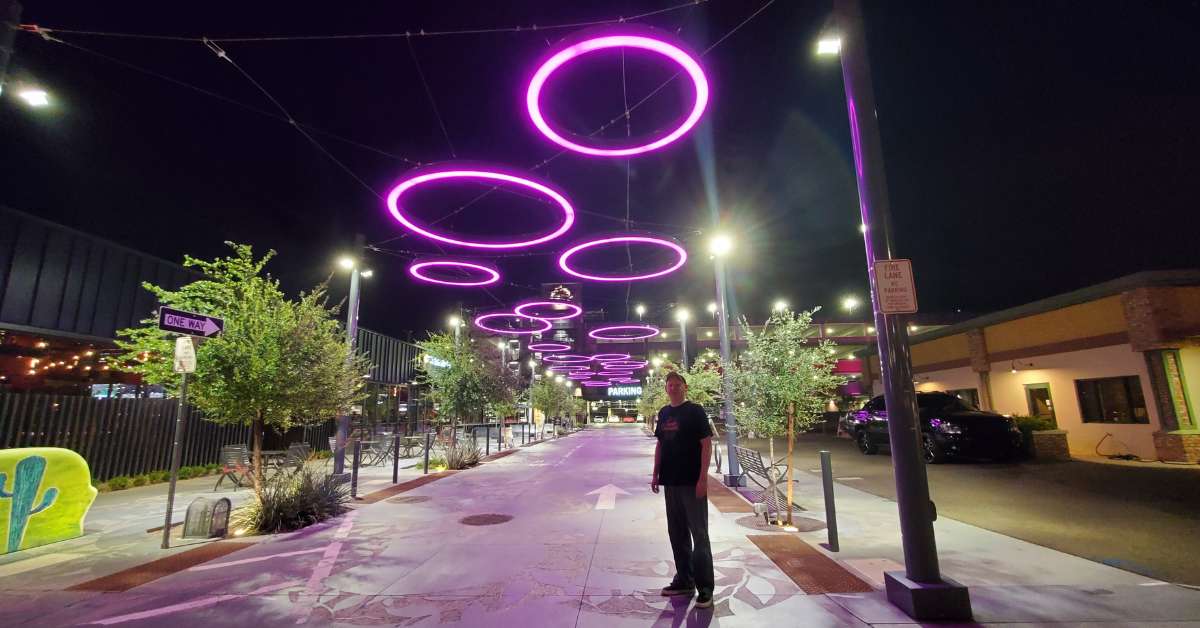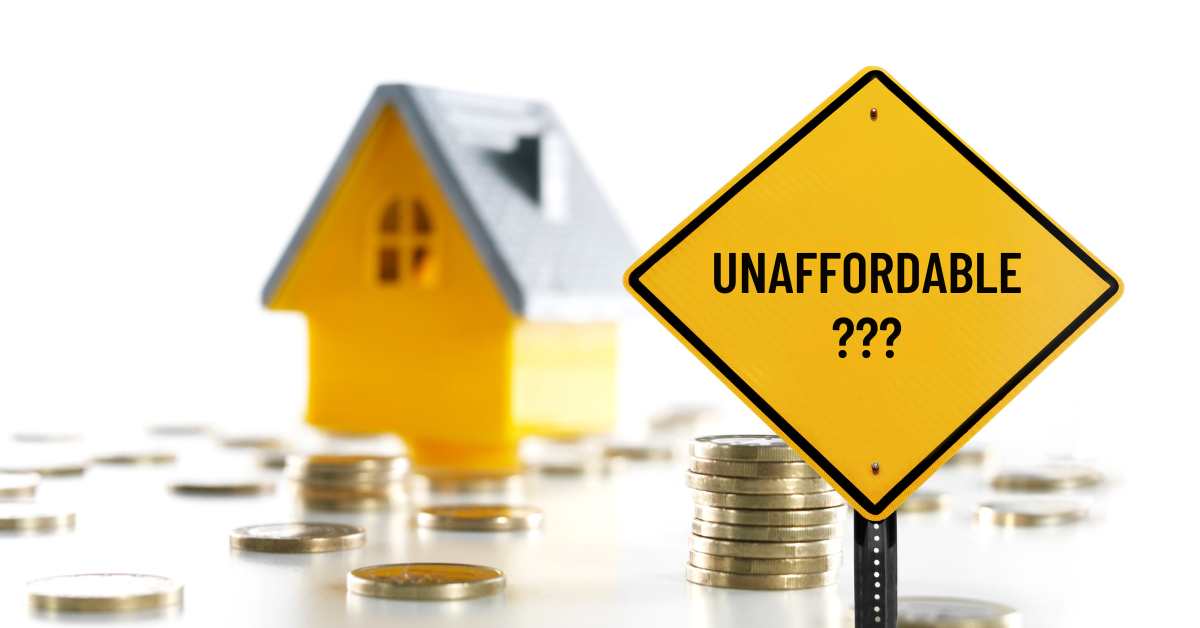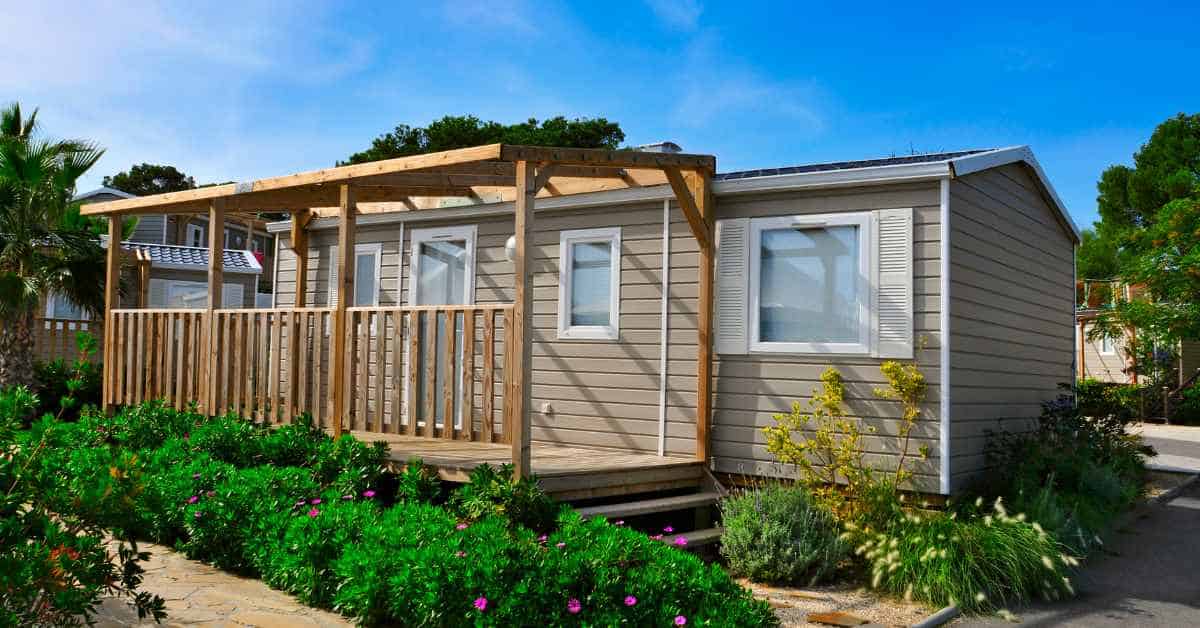Phoenix Area Housing, More Than Just Price Tags

When you hear about housing affordability in Phoenix, what comes to mind? Skyrocketing prices? Bidding wars? Interest rates that seem to climb every time you check the news? You're not wrong—but you're not getting the full picture either.
As someone who navigates the Phoenix housing market every day, I've noticed that most conversations about affordability miss the nuance of what's really happening in our desert city. The headlines paint broad strokes of crisis, but the reality on the ground is far more complex and, in many ways, more hopeful than you might think.
Housing affordability isn't just about the listing price you see online. It's a delicate balance between home prices, income levels, mortgage rates, property taxes, and even utility costs. It's about whether the average Phoenix resident can reasonably expect to own a home without sacrificing other essential parts of their life.
In this deep dive, we're going to look beyond the alarming headlines to understand what affordability really means in different parts of Phoenix, who's being affected most, and, most importantly, how you can navigate this market successfully regardless of your budget.
The Phoenix Real Estate Market: Context Matters

Before we dissect affordability, let's set the stage with some context. Phoenix has transformed dramatically over the past decade. Once known primarily for retirement communities and affordable desert living, the Valley of the Sun has evolved into a major tech hub, attracting companies like Intel, Amazon, and Taiwanese semiconductor giant TSMC, which is building a $12 billion facility here.
This economic growth has brought thousands of high-paying jobs to the region, but it's also created pressure on the housing market. The median home price in Phoenix has increased by over 70% since 2018, outpacing wage growth significantly during the same period.
At the same time, Phoenix has experienced some of the fastest population growth in the nation. Between 2010 and 2020, Maricopa County added nearly 600,000 new residents—more than the entire population of Atlanta. All these new Phoenicians need somewhere to live, intensifying competition for available housing.
Add to this mix the impact of short-term rentals, investment properties, and second homes, and you have a perfect storm of housing pressure that affects affordability across the board. The Greater Phoenix area has large investment companies that were going up against buyers who wanted to live in the home, and those big companies usually had the edge.
Two Expert Perspectives: Supply vs. Accessibility
National housing experts have been debating what's really driving affordability challenges, and their insights help us understand Phoenix's situation better.

Ivy Zelman: The Accessibility Crisis
Ivy Zelman, CEO of Zelman & Associates and one of the analysts who correctly predicted the 2008 housing crash, frames today's challenge not as a supply issue but as an accessibility problem.
"You could talk as much as you want about how many units might be short," Zelman explained in a recent webinar, "but if you can't offer, whether it be a rental unit at less than a thousand a month or the mortgage payment at a thousand dollars a month, who really cares?"
Her point resonates strongly in Phoenix, where new construction has actually been robust compared to many other major cities. According to data from the Home Builders Association of Central Arizona, Phoenix issued over 30,000 single-family home permits in 2021—significantly more than pre-pandemic levels.
Yet despite this building boom, affordability continues to deteriorate. Why? Because new homes are typically priced well above what middle-income Phoenix residents can afford. The average new construction home in Phoenix now sells for nearly $450,000, requiring an income of roughly $100,000 to comfortably afford, since it's well above the median household income of around $65,000.
Zelman's perspective helps explain why simply building more homes isn't automatically solving our affordability challenges. The types of homes being built matter just as much as the quantity.
Logan Mohtashami: The Historical Perspective
Housing analyst Logan Mohtashami brings a different angle to the conversation by questioning whether housing was ever truly "affordable" in America.
"When was housing ever affordable?" he asks, pointing out that throughout American history, homeownership has typically required financial sacrifice, family support, or creative financing arrangements.
Mohtashami notes that during nearly every major inflationary period—from the post-WWII boom to the 1970s to our recent pandemic economy—home prices have risen faster than wages. In his view, expecting housing to suddenly become "affordable" by historical standards may be unrealistic.
Instead, he suggests that most successful homebuyers make it work through practical adjustments: combining incomes with a partner, compromising on location or home features, or exploring alternative financing options.
This historical perspective is valuable for Phoenix residents who might feel like they've missed their chance at homeownership. The reality is that buying a home has always required strategy and flexibility—perhaps even more so in rapidly growing cities like ours.
How Phoenix Compares: The Bigger Picture
To understand where Phoenix stands nationally, let's look at Realtor.com's comprehensive State Report Cards on housing affordability and construction activity.
Their analysis evaluates four key metrics:
- REALTORS® Affordability Score (25% of total score)
- Median earner's share of income spent on housing (25%)
- Permit-to-population ratio (40%)
- New-construction premium (10%)
Arizona received C overall, placing it in the middle of the pack nationally. While our state performs relatively well on new construction metrics (we're building at a faster pace than most states), our affordability scores have worsened over the past two years.
The median Phoenix home now requires about 35% of the median household income—above the 30% threshold considered "affordable" by housing experts. This places Phoenix in a challenging but not impossible situation compared to coastal markets like San Francisco or New York, where housing can consume over 50% of median income.
The Phoenix Affordability Map: A Tale of Many Cities
When we zoom in from the state level to look specifically at Phoenix, we find that affordability varies dramatically by neighborhood. Phoenix isn't one unified housing market—it's dozens of micromarkets with their own dynamics.
Central Phoenix and Downtown
 Taken by Gage Skidmore license
Taken by Gage Skidmore license
The urban core has seen some of the most dramatic price increases in recent years. Historic neighborhoods like Roosevelt Row, Encanto, and Coronado have experienced gentrification and renewal, with century-old bungalows now commanding premium prices. The median home in these areas now sells for over $550,000, placing them out of reach for many first-time buyers.
However, these areas also offer some of the few multi-family options in Phoenix, with newer condominium developments providing entry points in the $300,000-$400,000 range—still expensive, but more accessible than single-family homes in the same neighborhoods.
West Phoenix
 Glendale at Christmas
Glendale at Christmas
Communities like Maryvale, Alhambra, and parts of Glendale offer some of the most affordable housing in the metro area, with median prices between $300,000 and $375,000. These neighborhoods typically feature older homes built between the 1950s and 1980s on larger lots.
Peoria, AZ is a dynamic and rapidly growing city in the greater Phoenix metropolitan area, nestled firmly on the West Side. Nearby semiconductor plants and revitalized business districts—have made Peoria a hub for new jobs and innovation.
While these areas present better value opportunities, they often require more investment in renovation and may have fewer amenities within walking distance. However, for buyers willing to look beyond cosmetic issues, West Phoenix represents one of the few remaining areas where middle-income families can reasonably enter the market.
East Valley
 Downtown Gilbert parking garage lights at night
Downtown Gilbert parking garage lights at night
Communities like Mesa, Gilbert, and Chandler have experienced tremendous growth over the past decade. Once considered affordable alternatives to Scottsdale, these cities now command premium prices themselves, particularly in newer master-planned communities.
The median home in Gilbert now sells for over $550,000, while parts of Mesa still offer entry-level homes in the low $400,000s. These communities tend to offer excellent schools and amenities, driving continued demand despite price increases.
North Phoenix and Scottsdale
 Scottsdale condos off the Arizona canal
Scottsdale condos off the Arizona canal
These areas represent the luxury end of Phoenix's market, with median prices exceeding $700,000 in many neighborhoods. While not typically considered "affordable" by conventional standards, even these premium areas offer varying price points, particularly in older neighborhoods or condominium communities. And don't forget Paradise Valley, the most expensive town in all of Arizona, with a median sale price of $3,850,000.
I work mainly in the northern area, including Scottsdale, Carefree, and Cave Creek real estate. I also work in North Phoenix and two farther north towns of Anthem and New River. Scottsdale continues to remain one of the most popular spots that buyers are looking at - until they see the prices and realize they cannot get what they want in their price range. That's when they have to face reality and start looking in more affordable areas.
In fact, the top 5 high-priced areas in all of Arizona are (4 are considered Phoenix suburbs):
- Paradise Valley
- Sedona
- Scottsdale
- Carefree
- Cave Creek
Who's Being Hit Hardest?
The affordability challenges in Phoenix don't affect everyone equally. Understanding who's struggling most can help illuminate potential solutions:
First-Time Homebuyers

With rising prices and stricter lending standards, first-time buyers face perhaps the steepest climb. The traditional entry-level home in Phoenix—typically a 3-bedroom, 2-bath ranch built in the 1970s or 1980s—has appreciated from around $200,000 in 2018 to over $350,000 today. Combined with higher interest rates, monthly payments have nearly doubled.
As mentioned above, that gets worse if they want to live in a popular area like Scottsdale. I showed a completely affordable 3-bedroom, 2-bath condo that was completely refurbished inside. My first-time buyer didn't like the "old" complex - how the entire condo community looked like from the outside. So she is either going to have to continue renting if she wants to stay in Scottsdale, or she has to change her idea of accepting what she can get for her money in Scottsdale. Her other choices are to move to a more affordable town.
Middle-Income Essential Workers

Teachers, firefighters, nurses, and other essential workers earning between $50,000 and $80,000 annually find themselves in a particularly difficult position. Their incomes are too high to qualify for most assistance programs but too low to comfortably afford median-priced homes in the neighborhoods where they work.
If they've purchased something already in the area they work in, they can hopefully use the equity built up to sell and buy a bigger place if they need more space. Or they just stay where they are. But many of these workers are going to be priced out of the areas they work in, which will require them to have to commute, which brings more expense.
Retirees on Fixed Incomes

Many retirees who bought homes in Phoenix decades ago now face challenges if they want to downsize or relocate within the metro area. The equity in their current home may be substantial, but finding an affordable alternative in today's market often means moving far from established communities and support networks.
With that said, I still believe that if they're downsizing near where they are now, they are still in a better position than most others. They can opt to pay cash for their next, less expensive place, or they can get a reverse mortgage on their new home. They will have to learn all about reverse mortgages. Those who have run into problems were using these mortgages to continue taking money out of the mortgage, using it like an ATM.
There are also 55+ communities available throughout Phoenix and the surrounding suburbs. They include mobile homes, condos/townhomes, up to single-family homes. These areas are usually well taken care of and offer lower prices than surrounding areas.
Practical Options for Phoenix Homebuyers
Despite these challenges, thousands of people successfully purchase homes in Phoenix every month. Here's how they're making it work:
1. Embrace "Stepping Stone" Homeownership
Many successful buyers have abandoned the idea that their first home needs to be their forever home. Instead, they purchase what they can afford now—perhaps a condominium or a home in a transitional neighborhood—with plans to build equity and upgrade in 3-5 years. This is what I try to explain to first-time buyers. They need to get their foot in the door. And it's best to do that with a lower-priced place in the town you love, since the value of that property will grow at the same (or very similar) pace as that town.
2. Explore Down Payment Assistance Programs
Arizona offers numerous programs for first-time and moderate-income homebuyers:
- The HOME+PLUS program provides down payment assistance up to 5% of the loan amount
- The Pathway to Purchase program offers $15,000 in assistance for buyers in specific zip codes
- The Home in Five Advantage program combines competitive interest rates with down payment grants
3. Consider New Construction in Outer Suburbs
While many new homes are priced at premium levels, some builders are specifically targeting the "missing middle" with developments in outlying areas like Buckeye, Queen Creek, and Maricopa. These homes often start in the mid-$300,000s—still not inexpensive, but more attainable than similar properties closer to central Phoenix.
4. Look for Rate Buydown Opportunities
Many builders and even some individual sellers are offering mortgage rate buydowns to make monthly payments more affordable. These arrangements typically reduce your interest rate for the first 1-3 years of the loan, giving you time to settle in before the full payment takes effect.
Beyond Buying: Alternative Housing Solutions
For some Phoenix residents, traditional homeownership might not be the right path right now. Alternative approaches worth considering include:
Rent-to-Own Arrangements
Several companies now offer programs where you can rent a home with an option to purchase it later at a predetermined price. While these arrangements come with their own complexities, they can provide a pathway to ownership for those needing time to improve their financial position.
The only problem I've seen with this is that the purchase rarely goes through. Also, I've seen more money required up front than if you used a low down payment mortgage, such as FHA, VA (if you qualify), and even some conventional loans.
Co-Ownership Models
Shared equity models are gaining popularity, where investors partner with occupant buyers to purchase homes together. The occupant lives in the home while building equity in their portion, eventually buying out the investor partner over time.
Most of the "shared equity" homes I'm seeing in the Valley are called fractional ownership. They state they are not a timeshare, but this isn't a situation where you actually live in the property. You get to choose your allotted times within the year.
The closest I can think of in the area are cooperatives. You don't actually own the property - you own a share in the cooperative itself. This might sound great but you can't get financing for it. It is a cash-only purchase. But the prices are usually under what the going prices are.
Manufactured Housing

Modern manufactured homes offer quality and amenities comparable to traditional construction at substantially lower prices. Several communities in the Phoenix metro area offer these homes in the $100,000-$200,000 range, though buyers should be aware of additional considerations like land leases in most communities.
I recently had a potential buyer who didn't realize that you don't just purchase the mobile home and that's it. She was completely unaware that she'd have to pay a monthly lease for the land the mobile is on.
Also, you cannot get a mortgage on a mobile home. They are treated more like automobiles, and you have to use a special mobile home lender. The interest rates are usually higher than mortgage interest.
Looking Ahead: The Future of Phoenix Housing

While no one has a crystal ball, several factors will likely influence Phoenix's affordability landscape in the coming years:
- Water concerns may eventually limit growth in certain areas, potentially shifting development patterns - we're already seeing this in towns like Rio Verde.
- Remote work could continue redistributing population across the metro area, changing neighborhood dynamics.
- New transit developments, including light rail extensions, might create affordability opportunities along new corridors. That's fine for downtown Phoenix, but one thing most realize is that mass transit is lacking throughout the surrounding suburbs. Where I live there is zero bus service available.
- Zoning reforms being considered by several Phoenix-area municipalities could allow for more diverse housing types.
Conclusion: Finding Your Path in Phoenix's Housing Market

The conversation about housing affordability in Phoenix is complex and often oversimplified in mainstream coverage. While challenges certainly exist, opportunities do too—especially for those willing to think creatively and remain flexible.
The most successful homebuyers in today's Phoenix market share a few common traits: they start with a realistic assessment of their budget, they remain open to different neighborhoods and housing types, and they understand that their first home purchase is just one step in their overall financial journey.
Whether you're a first-time buyer, a growing family looking to upsize, or a retiree considering your next move, remember that affordability is ultimately personal. What matters isn't just what the median Phoenix buyer can afford, but what makes financial sense for your specific situation.
If you're navigating these waters and want to understand your options better, I'm here to help translate market data into practical advice for your unique circumstances. The path to homeownership in Phoenix may have some detours, but with the right guide, you can still reach your destination.
Posted by Judy Orr on


Leave A Comment